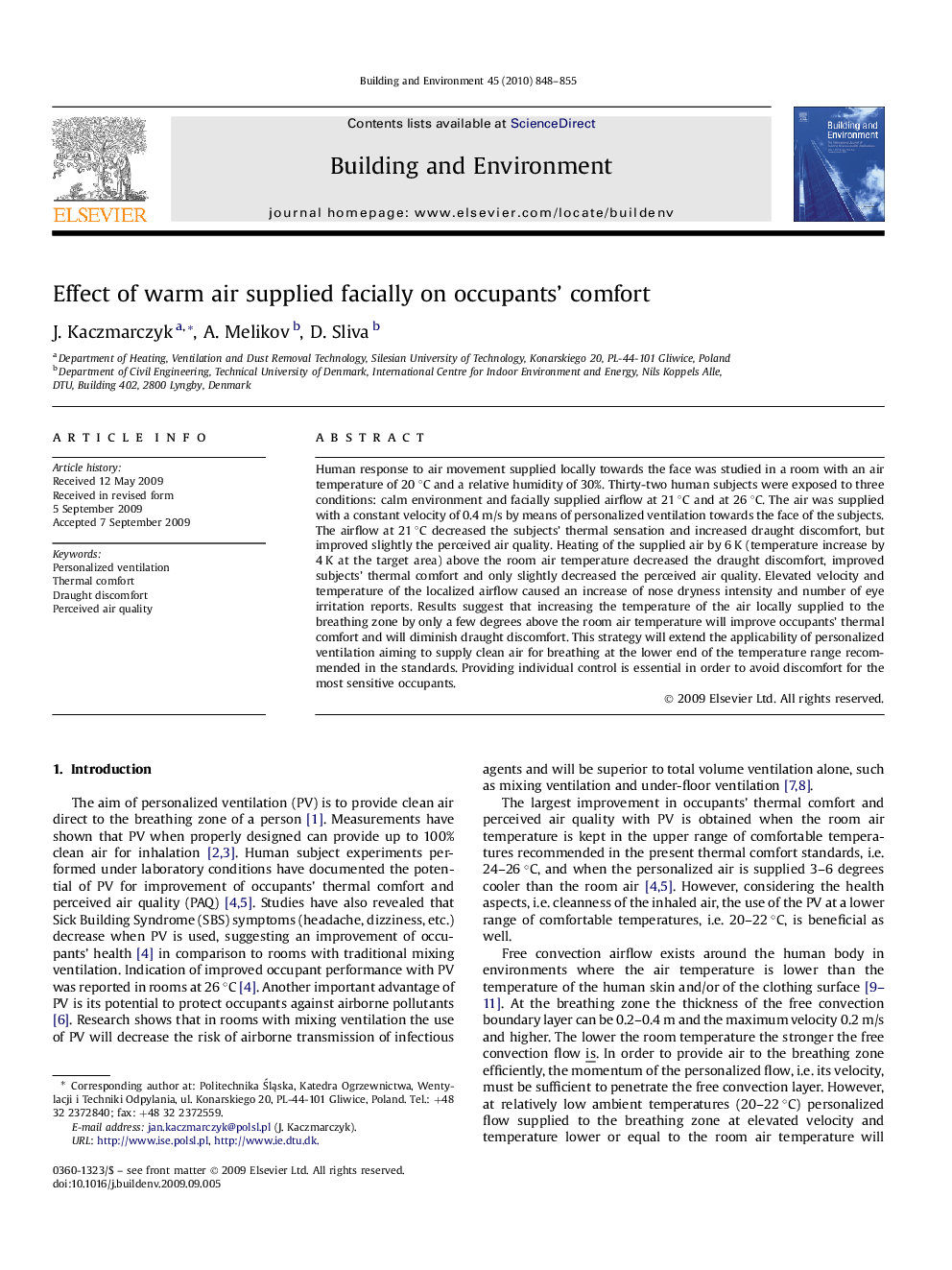| Article ID | Journal | Published Year | Pages | File Type |
|---|---|---|---|---|
| 249120 | Building and Environment | 2010 | 8 Pages |
Human response to air movement supplied locally towards the face was studied in a room with an air temperature of 20 °C and a relative humidity of 30%. Thirty-two human subjects were exposed to three conditions: calm environment and facially supplied airflow at 21 °C and at 26 °C. The air was supplied with a constant velocity of 0.4 m/s by means of personalized ventilation towards the face of the subjects. The airflow at 21 °C decreased the subjects' thermal sensation and increased draught discomfort, but improved slightly the perceived air quality. Heating of the supplied air by 6 K (temperature increase by 4 K at the target area) above the room air temperature decreased the draught discomfort, improved subjects' thermal comfort and only slightly decreased the perceived air quality. Elevated velocity and temperature of the localized airflow caused an increase of nose dryness intensity and number of eye irritation reports. Results suggest that increasing the temperature of the air locally supplied to the breathing zone by only a few degrees above the room air temperature will improve occupants' thermal comfort and will diminish draught discomfort. This strategy will extend the applicability of personalized ventilation aiming to supply clean air for breathing at the lower end of the temperature range recommended in the standards. Providing individual control is essential in order to avoid discomfort for the most sensitive occupants.
